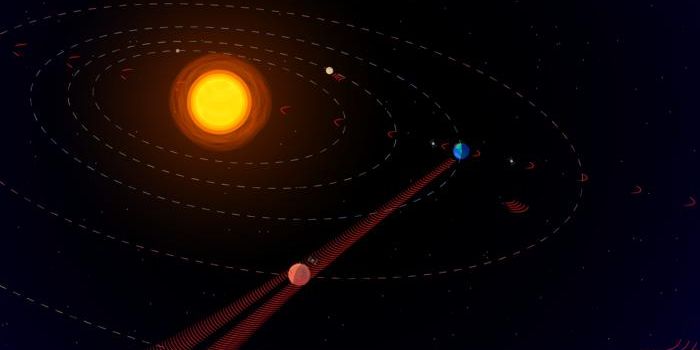New Details About the Far Side of the Moon are Revealed
It takes 27,322 days for the Moon to orbit Earth and 27 days for it to rotate once on its axis. We can't detect that motion from here by looking at it, so the Moon appears to be perfectly still, with one side of it always facing us because it's locked in a synchronous rotation. But satellites have glimpsed the far side of the moon, and China's Chang'E-4 mission sent a spacecraft to investigate it further with a rover called Yutu-2.
Radar data collected by Yutu-2, which is the first rover to land on the far side of the moon, initially suggested that one layer of soil sits in the subsurface of the Moon, called its regolith. Different layers of soil were not detected at that time.
Now scientists have created a new method for analyzing the data produced by Yutu-2. This has revealed more about the layers on the Moon's surface. The work revealed multiple layers of soil, changing what was assumed.
The new technique makes inferences about soil based on radar signatures of rocks and boulders that are buried in the soil. While the boundaries between soil layers are usually smooth and tough to detect with previous methods, this work revealed those unseen layers. Four were found in all that went to a depth of twelve meters. The findings have been reported in Geophysical Research Letters.
Study leader Dr. Iraklis Giannakis of the University of Aberdeen's School of Geosciences noted that this radar processing tool has given them access to new details in the data.
"By doing so, we have discovered that, rather than a homogenous twelve-meter-deep regolith whose material source was thought to be a nearby crater called Finsen, there is a more complicated structure where the first twelve meters consist of four distinct layers that were previously unseen using conventional radar processing," said Giannakis.
Giannakis suggested that this work will aid current and future planetary exploration missions. "The methodology we have developed can be used to infer the properties of the subsurface using radar and detect previously unseen layered structures within the first ten to twenty meters of planetary soils," Giannakis added. "This will be of great importance in terms of increasing our understanding of planetary soils, as we can now see what lies beneath the surface in more detail than ever before."
Sources: Phys.org via University of Aberdeen, Geophysical Research Letters









